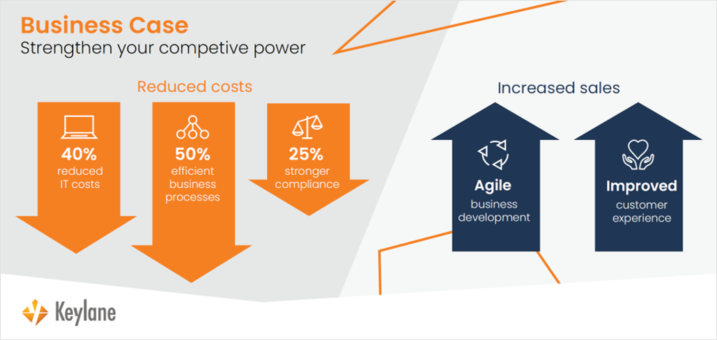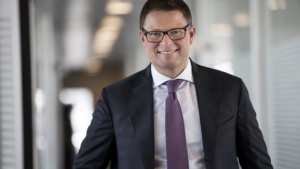Unleash your business potential in a digital world
Why old and complex IT systems can be the biggest obstacle for life and pension companies
IT systems are becoming more and more fundamental for almost all organisations, and technology is advancing at lightning speed. This means that the more modern a platform you have, the better you can unleash the full potential of your business: both in terms of business development, digitalisation and customer service. However, many postpone the decision to switch to a modern platform, which can be risky, the expert believes.
For a long time now, the IT systems in the life and pension industry have been built from the ground up and have continuously become more complex in order to meet new requirements and business expansion. The problem is that the core of these aging legacy systems is no longer flexible and modern enough to support the kind of business the companies have the potential to run.
The potential is great – and it only requires initiating a “complete overhaul” of the IT platform. And while it may be associated with risk to do so, it is certainly associated with even higher risk to get stuck with an old IT setup and continue to build on top of it, thereby continually increasing complexity.
“I think an inverted logic rules among some companies, which states that if you do nothing, you are free from risk, whereas if you actively do something new and convert, you take a risk. But to continue without renewing yourself is in itself a risky decision,” says Jesper Essendrop, Executive Director of the software company Keylane, which develops IT solutions for the insurance and pension industry.
Automation halves costs
Although replacing legacy IT systems is a major change and a time-consuming process, the benefits are invaluable, he believes.
“The biggest advantage of a new and modern IT platform is automation of your business processes – our business cases actually show a cost saving in customer service of up to 50 percent. This advantage in itself is focal – it enables you to release many resources to other parts of the organisation, where they can instead focus their time and efforts on business development, innovation and far better customer service,” says Jesper Essendrop.
In addition, significant savings on IT and compliance are achieved.

CEO of AP Pension: We will not end up with a “Sagrada Familia”
At AP Pension, CEO Bo Rasmussen is well aware that his company will have to replace its IT systems within the next five years. And it eventually becomes a problem when you postpone it and build solely on top of the old systems – as AP Pension, and many others, still do.
“We know that i n the long term we will be in a much better position with a complete replacement to a unified modern platform, which we can subsequently configure ourselves. Taking the big step is a bit like building a highway that you can benefit from afterwards. It is expensive and not without risk, but the alternative is to continue on the road, where you are limited to 80 kilometres per hour, while your competitors suddenly drive 110,” he says.
n the long term we will be in a much better position with a complete replacement to a unified modern platform, which we can subsequently configure ourselves. Taking the big step is a bit like building a highway that you can benefit from afterwards. It is expensive and not without risk, but the alternative is to continue on the road, where you are limited to 80 kilometres per hour, while your competitors suddenly drive 110,” he says.
Jesper Essendrop understands why it may be convenient to postpone a complete overhaul, but he also points out again that the risk is greater by not initiating the change.
“Converting to a new platform is often a larger project and a significant investment that may take several years. Of course, it is important to do it in a controlled way, and there are both tools and methods to do it right – which means that the risks involved can be mitigated to a great extent, whereas the risks associated with simply continuing, as one has always done, cannot. ”
Bo Rasmussen in AP Pension understands that argument well. He does not want to continue down the current path, building on the old systems to eventually be left with a “La Sagrada Familia” – the huge cathedral in Barcelona , which has been under construction for over 100 years, but has never been finished or fully functional.
“I would call it the horror scenario – that you end up with something too complex, which ultimately means that you become ineffective,” he says.
A SaaS-based industry platform is crucial for competitiveness in a digital world
If you switch to a modern platform, you will be faced with the exact opposite. A streamlined and unified IT platform that can be easily configured to handle new product types and business processes. Furthermore, you can move a wide range of resources from operations to handle vital business development and improve customer service experience – which is an important parameter in the industry.
“This promotes customer satisfaction, which means that you get a stronger hold in retaining customers and attracting new ones. It is often about being a first mover. And here the IT platform plays a significant role in how short your time-to-market is when you get ideas for new products or new digital services,” says Jesper Essendrop.
Additionally, the entire organisation will experience a boost.
“The organisation will subsequently become more agile. It is set free to focus on its customers and to make more frequent changes and launches. The company can run its day-to-day operations more efficiently, and thereby free up time for new initiatives and better customer service. It is about staying future-ready,” points out Jesper Essendrop.
Moreover, there is an indisputable difference between choosing a SaaS platform (Software-as-a-Service) offered by Keylane, rather than installing, integrating, maintaining and operating your own IT systems. With SaaS you get an industry platform where everything operational, including development and maintenance, are covered.
“The organisation gets truly empowered when IT is no longer something old and complex that weighs it down. SaaS is updated frequently and fully through automation, so that you always have access to best practice from the start and do not have to test across older legacy systems. And because SaaS grows with the company, it becomes easier to make quick and effective changes to adapt to markets and customer needs. The platform is also maintained with the latest legislative requirements and industry standards,” explains Jesper Essendrop.
The above is a translation of the articles featured in the Danish financial paper Børsen, the Finnish financial paper Kappaulehti and the Norwegian financial paper Dagens Næringsliv
For more information please do not hesitate to contact Jesper Essendrop at jesper.essendrop@keylane.com
